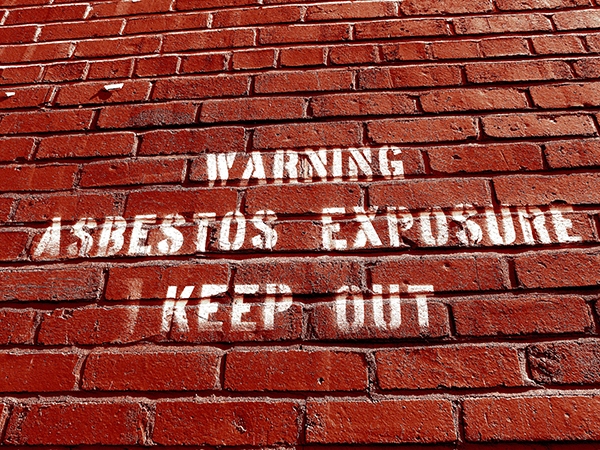The five principles of asbestos management
Ask any responsible landlord or property owner and they will tell you that compliance and safety is at the top of their agenda. However, when it comes to the sensitive subject of asbestos, making the right decision can be a dauting process. Combine this with a rise in HSE prosecutions and it is clear that landlords and building owners need expert guidance when it comes to asbestos management. Luckily help is on hand and in this article Sean Banks, Senior Asbestos Compliance Manager at John Rowan and Partners talks about the five principles of best practice for asbestos management…
If you are a building owner or responsible for the maintenance of a premises, then you have a duty of care under the Control of Asbestos Regulations 2012 to manage any asbestos in your properties. The regulations cover all industrial, commercial, public and multiple occupancy properties and with asbestos-related conditions responsible for about 4,000 deaths a year (according to the HSE) it’s a responsibility that needs to be taken seriously.
At John Rowan and Partners, we help property owners to discharge their responsibilities safely, efficiently and cost effectively. Our work ranges from individual projects, to supporting large organisations with the management of their portfolio of asbestos information. In each case we follow five key points to take a best practice approach to asbestos management.
1 – Effective information management
First and foremost, the quality of your asbestos management comes down to the quality of your data and the quality of communication with your surveyors, supply chain, residents and occupants. Asbestos management starts with survey reports and for organisations with multiple properties this can amount to a significant level of information!
In order to remain compliant, this information needs to be carefully managed and acted upon. Our role is to bring all the different parties involved in the asbestos management process together to ensure they are all aligned, understand their individual roles and responsibilities and keep communicating with each other.
2 – Review all existing data
Poor asbestos survey data can cause significant programme delays and additional costs, so it is imperative that surveys are undertaken correctly. One of the first processes we undertake is the review of any existing surveys and the setting out of detailed processes for future surveys. Part of the best practice approach is to ask the questions that aren’t normally part of the construction process, as it is imperative to find out if surveys have been intrusive enough.
Rather than the fault of the surveyor, an incorrect survey is often down to a miscommunication around the brief they have been given. This could ultimately lead to asbestos being missed or remediation work not being undertaken correctly. In this case the HSE could quickly put the entire project on hold until it is investigated and satisfied that all the high-risk items have been found – a costly and lengthy process!
3 – Plan out your strategy
Your asbestos management plan should be detailed and strategically laid out. At the heart of every decision we make is our scoping document. This strategic document breaks down and details the proposed works for the principle removal contractor. It ensures all the asbestos is not only correctly identified but has an appropriate decision actioned against it.
Without this approach, asbestos may be missed, removed when it should be left or not removed correctly. It is at this point that some organisations fall-down in terms of compliance, as they simply don’t have the knowledge to take the appropriate action.
4 – Choose the right remediation
Left to their own devices, the default position for many contractors will be to remove all the asbestos present in a building. A position often shared by clients where the sensitivities around asbestos has led many to assume removal is the only option – whatever the cost.
However, the regulations and guidance suggest that sometimes asbestos should be left in place. Removing asbestos can in some cases create more of a health hazard. It is important that each case of asbestos is reviewed individually to assess the correct level of mitigation and works. Once agreed and the mitigation undertaken, then as compliance managers we would review the completed work to ensure it has been undertaken correctly.
Any error at this stage can put workers or occupants at risk or again cause long-delays to a building programme while the HSE reviews it.
5 – Close the information loop
It’s important to remember asbestos management doesn’t stop when it has been removed. A very common issue is all too often clients fail to ‘close the loop’ on the information. This means the original surveys and building documents aren’t updated to show the completed works, reflecting the current status of property. Instead they are put back into storage – leaving the history of their property out of date.
Put simply, this leaves you with outdated surveys showing a greater risk of asbestos across your portfolio than you currently have. Further down the line the properties will, likely, have to be reassessed and resurveyed at considerable expense and time.
However, by using our scoping documents we quickly and efficiently update the surveys to show completed works and recommendations and add the new lower level of risk to the property portfolio. This makes any future review easier and presents a high-level of compliance for the client and a better quality of housing stock for tenants. A win, win for all.
For more information or support on your asbestos management please get in contact with our asbestos expert Sean Banks on SBanks@jrp.co.uk

